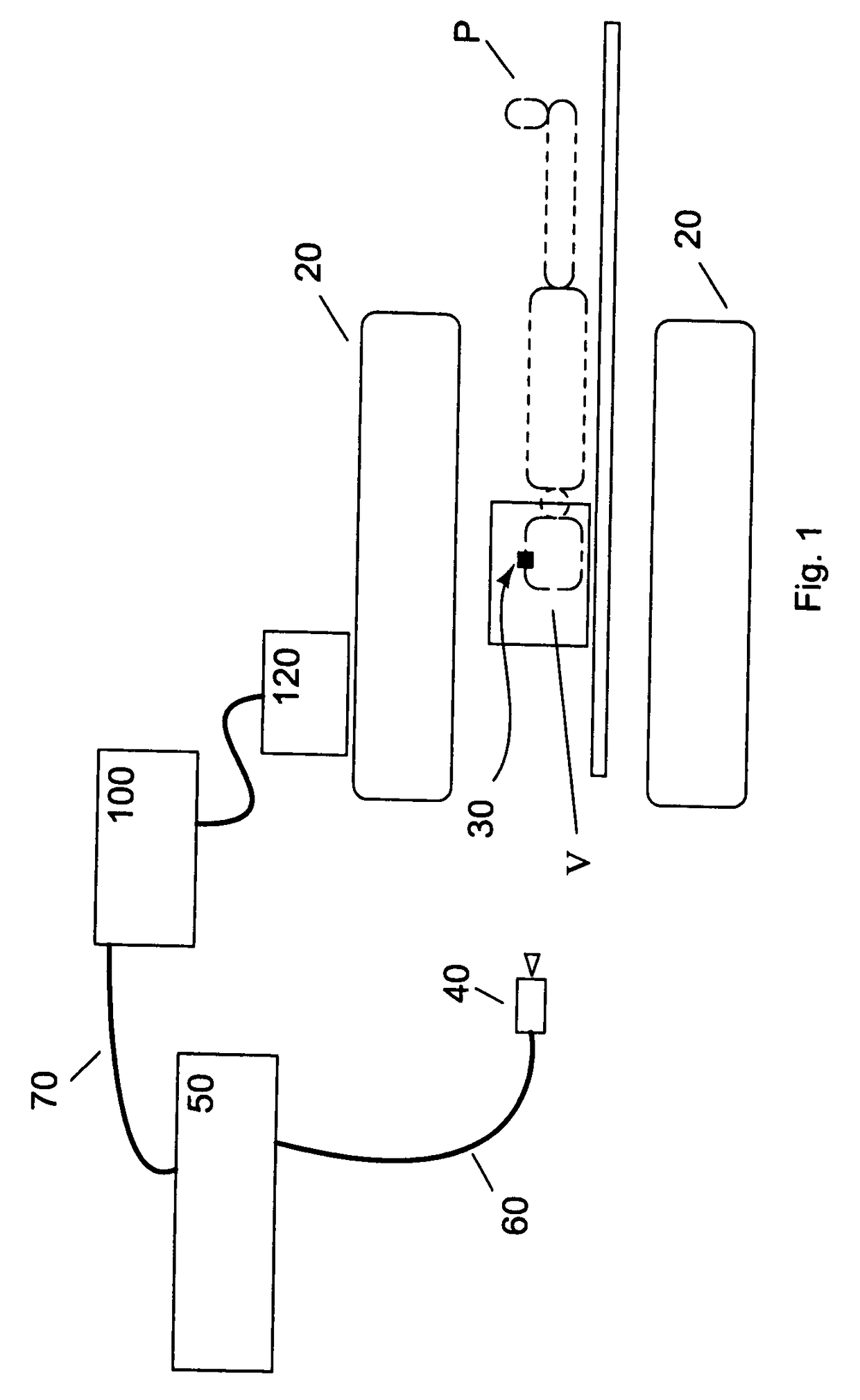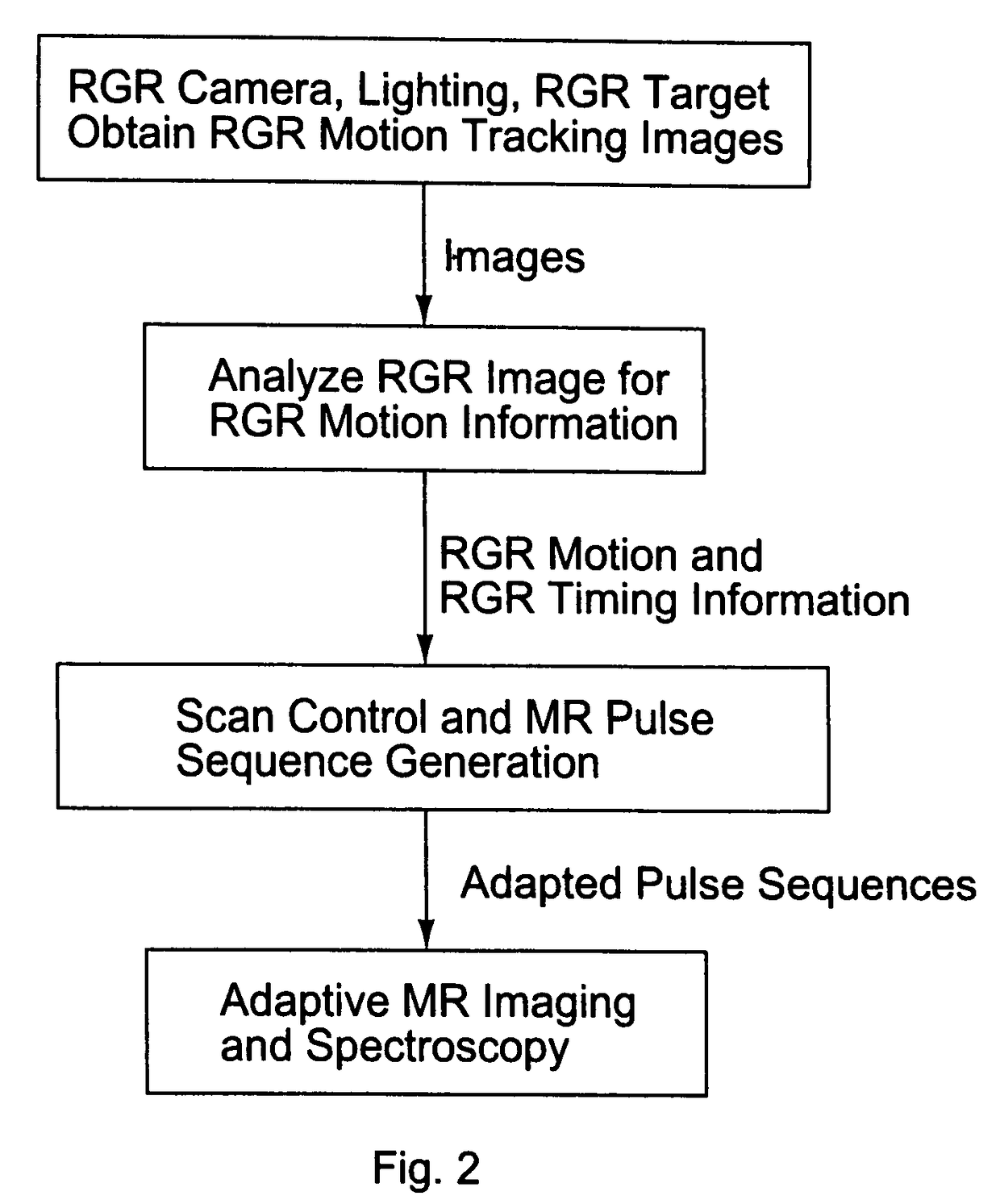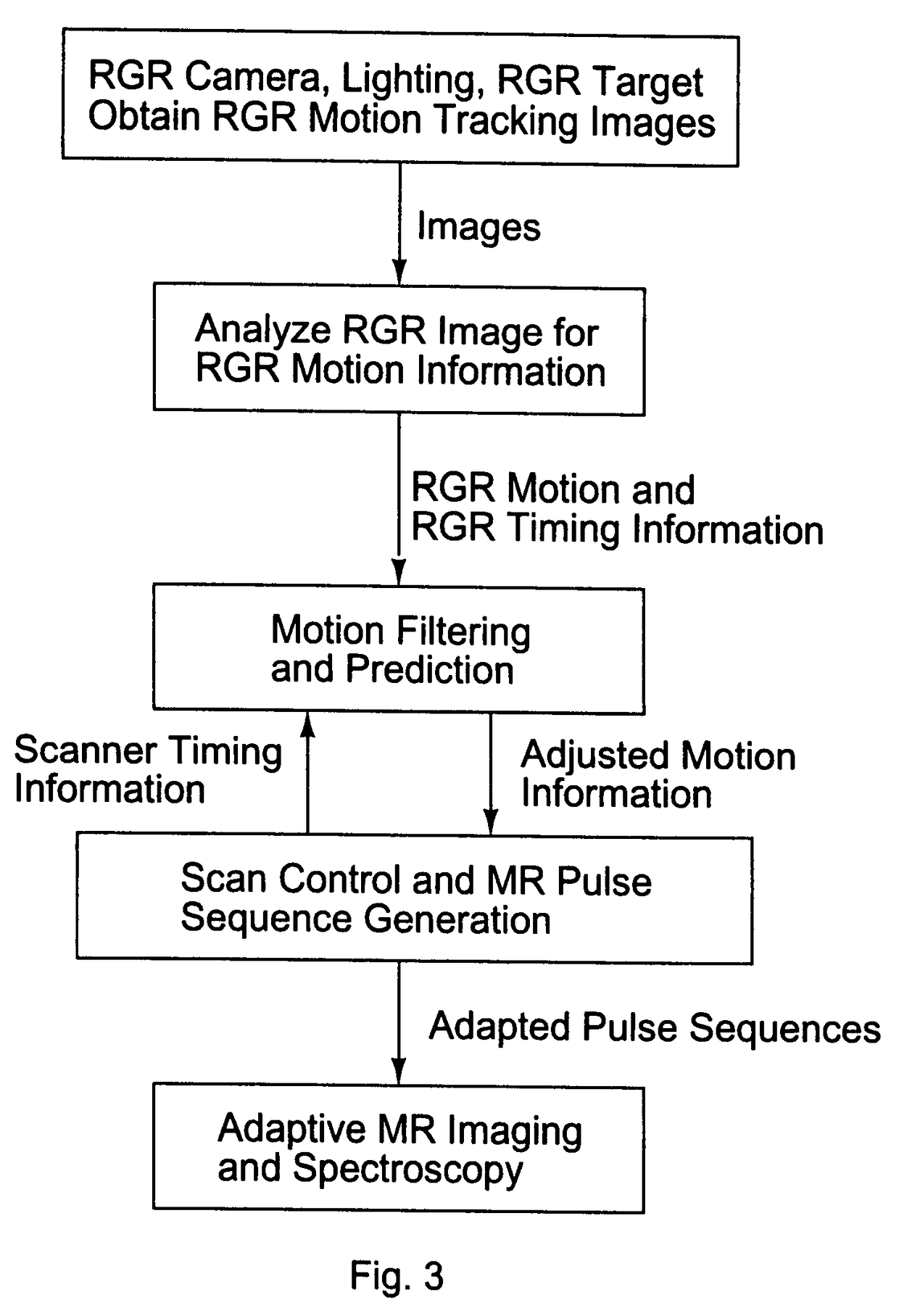These types of scans that detect motion inside a patient or other object over time (“digital
angiography systems”) can also have a long duration, and be subject to the problem of patient or
object motion.
Many tomographic imaging techniques rely on detecting very small percentage changes in a particular type of
signal, which makes these techniques even more susceptible to movements.
However, these small
signal changes may easily be obscured by
signal changes of similar or even greater size that occur during unintentional subject movements.
Because tomographic techniques require that so many images be taken (because so many slices and scanning steps are necessary), the scan has a long duration, so that motion of the subject is a substantial problem for acquiring accurate data.
Similarly, it is exceedingly difficult to perform scans in awake animals.
The basic problem is that it may take several minutes for a scan to be completed, but the patient or other object being scanned cannot remain still for several minutes.
Further, the space for a patient or other object being scanned (the “scanning volume”) in an MR
machine is very limited—there is very little space in an MR
machine once a patient has been positioned inside for a scan.
While these approaches are particularly useful for reducing artifacts (or imaging errors) due to flowing blood,
swallowing or eye movements, they afford little improvement during movements of entire organs, such as
head movements.
These techniques can reduce motion sensitivity of MR scans under certain conditions, but cannot eliminate errors from motion under all conditions or for very quick movements.
However, these methods are inherently slow because they use MRI, i.e. they correct movements only every few seconds, and are unable to correct for motion in certain directions (orthogonal to the scan planes; in other words, towards or away from the planes in which the scans are being taken).
While all of these techniques reduce sensitivity to subject motion, several problems remain.
One major problem is related to the manner in which typical tomographic imaging methods acquire data.
For all methods described above, even if motion sensitivity for each individual acquisition (defining a line in k-space) is reduced, these methods typically do not account for variations in head pose amongst the different k-space lines.
Second, the methods poorly tolerate fast movements within individual acquisition steps.
Finally, one of the most significant issues is that none of these techniques can be applied universally across all the various scanning methods (pulse sequences—the order and manner in which slices are imaged) used in MRI or other tomographic scanning techniques.
While these MR-based “adaptive MRI” techniques provide good results in many situations, they intrinsically interfere with MR acquisitions, work only for a limited number of MR sequences, and are limited to measuring the position or pose a few times per second only.
However, SV systems have three limitations for adaptive
MR imaging: (1) measurement accuracy decreases as the distance between the cameras becomes smaller, (2) the accuracy of
orientation measurement decreases as the target becomes smaller; and (3) SV systems have high sensitivity to errors in internal calibration, i.e. small errors in the relative position or rotation of the cameras may cause large errors in the measured target pose.
However, accurate calibration has to be performed manually, using a specialized calibration tool or target, is
time consuming, and cannot be done while patients are being scanned.
However, this ideal separation is not possible in an MR
scanner because the opening to the scanning volume (the volume which can be scanned by the
scanner) is relatively narrow, making it impossible to move the cameras sufficiently far apart and still view into the scanning volume.
Additionally, tracking with SV cameras works optimally with larger tracking targets; however, the space in the MR or other scanner environment is very limited.
As noted above, slight errors in the internal calibration of SV systems can produce large measurement errors.
However, the study contains information showing that a tiny 1 / 100th degree change in the camera alignments can produce a 2.0 mm error in the position measurement and the study co-authors privately communicated to the present inventors that maintaining calibration was impracticably difficult.
The prior art has no means to track or correct for these slow changes while the
medical imaging system is in service, imaging patients.
The error which accumulates in the co-registration, because of loss of camera calibration, is a severe problem for motion compensation in
medical imaging using an external
tracking system.
However, since time on a medical imaging system is limited and expensive, removing patients and conducting repeated recalibration with a specialized calibration tool is prohibitively expensive.
While a bite bar may be tolerated by healthy and cooperative volunteers, it is an impractical solution for sick or demented patients, or young children.
Therefore, while stereovision systems are able to track subject motion for use with
adaptive imaging techniques when conditions are ideal, the use of SV systems for routine clinical scans proves impractical due to cumbersome recalibration procedures, instabilities over time, and awkward size and attachment of tracking markers (i.e. large marker requiring use of a bite bar).
The determination of the subject pose based on actual measurements is an
estimation problem.
 Login to View More
Login to View More  Login to View More
Login to View More 


